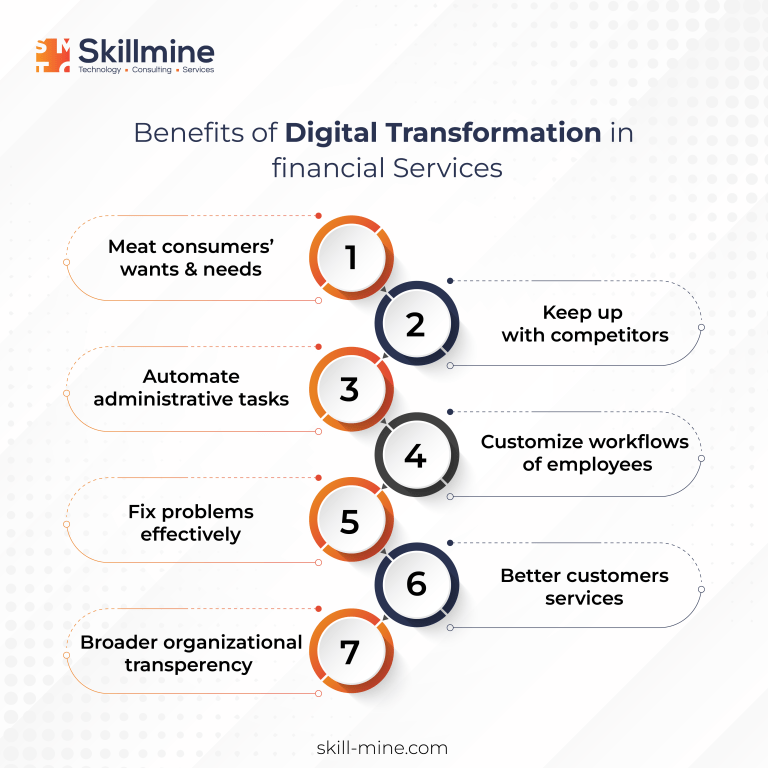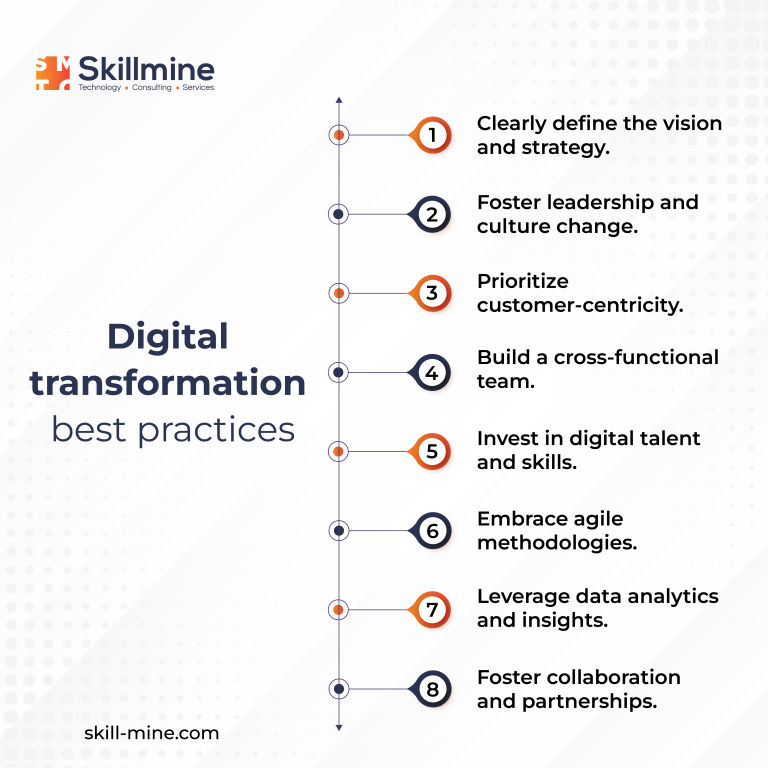digital transformation has significantly disrupted industry after industry. Many businesses are conducting extensive transformation initiatives to benefit from the latest trends. A report by McKinsey found that companies that embraced digital transformation outperformed their peers, with 1.8 times higher revenue growth, 2.0 times higher EBITDA margin growth, and 1.5 times higher market capitalization growth.
Take a look at a few digital transformation success stories.
CASE 1
A banking and financial services company headquartered in Singapore recognized the need to transform its traditional banking model into a digital-first organization. By adopting a customer-centric approach, they aimed to provide a seamless and personalized experience across all touchpoints.
The firm built a robust digital banking platform. They introduced an app, which offered a wide range of banking services, including account management, payments, investments, and loans. The organization also leveraged data analytics and AI technologies to gain valuable insights into customer behaviour.
They established cross-functional teams, empowered them to make decisions quickly, and encouraged a fail-fast, learn-fast mentality. This agile approach enabled them to iterate and refine their digital solutions rapidly. They also invested heavily in upskilling programs to equip employees with digital skills and knowledge.

Results and Impact:
Enhanced Customer Experience: Customers gained easy access to banking services through the app, which offered personalized recommendations and seamless transactions.
Increased Efficiency and Cost Savings: Automation and digitization of processes led to increased operational efficiency and cost savings. Digital channels reduced the need for physical branches, allowing for a more cost-effective banking model.
Business Growth: The focus on customer-centricity, data-driven decision-making, and innovative offerings helped attract new customers and deepen existing relationships, leading to increased market share and revenue growth.
CASE 2
A global leader in the electronics industry underwent a successful digital transformation journey by embracing IoT. The business focused on integrating its products and services into a connected ecosystem. For example, they developed smart home appliances that could be controlled remotely through mobile devices, providing convenience and enhancing the user experience.
The company continuously introduced new product lines and diversified its offerings, such as smartphones, tablets, wearables, home appliances, and televisions. This approach allowed them to adapt to changing market demands and consumer preferences.
The company also implemented digital technologies to optimize its supply chain management. They leveraged data analytics, automation, and cloud-based systems to enhance operational efficiency, reduce costs, and improve overall supply chain visibility.
Besides, the firm forged strategic partnerships with various technology companies, startups, and research institutions. These collaborations helped them access cutting-edge technologies, talent, and market insights.

Results and Impact:
The company’s focus on innovation, product diversification, and digitalization allowed them to stay ahead of competitors and capture a significant market share.
Through its digital initiatives, the firm enhanced customer satisfaction by delivering seamless, connected experiences across its product ecosystem. Personalization, convenient access to support services, and continuous product updates contributed to a positive customer experience.
Digitalization of supply chain management improved operational efficiency for the company. By leveraging data analytics and automation, they optimized processes, reduced costs, and improved overall supply chain visibility.
Conclusion
Remember that digital transformation is a dynamic process that requires agility, adaptability, and a willingness to embrace change. By following the best practices and staying committed to your digital transformation vision, you can successfully navigate the digital landscape in your industry and drive sustainable growth.
What are the challenges one should watch out for when embarking on a digital transformation journey? Read our blog to find out: What Are the Top Challenges in Digital Transformation
Looking for expert technology consulting services? Contact us today.





